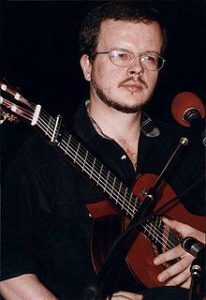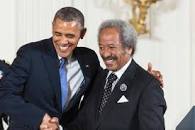by mr tambourine
This is part one of a two part examination of the songs Bob might be performing on his forthcoming tour of the USA. Part two will appear tomorrow.
Bob’s 2020 Summer US Tour Setlists
Show #1: June 4 2020, Bend, Oregon
- Most Of The Time
- Don’t Think Twice It’s Alright
- High Water (For Charley Patton)
- When I Paint My Masterpiece
- Can’t Wait
- I Dreamed I Saw St Augustine
- Union Sundown
- Tryin’ To Get To Heaven
- Make You Feel My Love
- Pay In Blood
- Girl From The North Country
- Not Dark Yet
- Gotta Serve Somebody
- Soon After Midnight
- Knockin’ On Heaven’s Door
Encore
- It Takes A Lot To Laugh It Takes A Train To Cry
- Disease Of Conceit
- 1 – first performance since 1992, Bob on guitar! New arrangement
- 2 – new arrangement, Bob on guitar
- 3 – new arrangement, first performance since 2018
- 6 – first performance since 2011
- 7 – first performance since 1992
- 15 – first performance since 2003, Bob on guitar!
- 17 – first performance since 1996, Bob solo on piano!
Show #2: June 6 2020, Ridgefield, Washington
- Disease Of Conceit
- It Ain’t Me Babe
- Most Of The Time
- When I Paint My Masterpiece
- Can’t Wait
- Sign On The Window
- TV-Talking Song
- Tryin’ To Get To Heaven
- Make You Feel My Love
- Scarlet Town
- Girl From The North Country
- Not Dark Yet
- Gotta Serve Somebody
- Soon After Midnight
- Knockin’ On Heaven’s Door
Encore
- Tonight, I’ll Be Staying Here With You
- It Takes A Lot To Laugh It Takes A Train To Cry
- 1 – Bob solo on piano
- 3 – Bob on guitar
- 6 – live debut! (song from New Morning 1970 – 50 years ago!)
- 7 – first performance since 1990
- 10 – new arrangement
- 15 – Bob on guitar
- 16 – first performance since 2006, Bob solo on piano
Show #3: June 7, 2020, Auburn, Washington
- Disease Of Conceit
- Shelter From The Storm
- Most Of The Time
- When I Paint My Masterpiece
- Shot Of Love
- I Dreamed I Saw St Augustine
- Union Sundown
- Tryin’ To Get To Heaven
- Don’t Think Twice It’s Alright
- Scarlet Town
- Girl From The North Country
- Not Dark Yet
- Gotta Serve Somebody
- Soon After Midnight
- Knockin’ On Heaven’s Door
Encore
- Ballad Of A Thin Man
- License To Kill
- 1 – Bob solo on piano
- 2 – first performance since 2015, new arrangement
- 3 – Bob on guitar
- 5 – first performance since 1989
- 15 – Bob on guitar
- 16 – Bob on guitar
- 17 – Bob solo on piano
Show #4: June 9 2020, Eugene, Oregon
- Disease Of Conceit
- Shelter From The Storm
- Most Of The Time
- When I Paint My Masterpiece
- Shot Of Love
- I Dreamed I Saw St Augustine
- TV Talking Song
- Tryin’ To Get To Heaven
- Don’t Think Twice It’s Alright
- Scarlet Town
- Girl From The North Country
- Not Dark Yet
- Gotta Serve Somebody
- Soon After Midnight
- Knockin’ On Heaven’s Door
Encore
- Ballad Of A Thin Man
- Queen Jane Approximately
- 1 – Bob solo on piano
- 3 – Bob on guitar
- 15 – Bob on guitar
- 16 – Bob on guitar
- 17 – first performance since 2013
Show #5: June 12, 2020, Stateline, Nevada
- Gotta Serve Somebody
- Just Like Tom Thumb’s Blues
- Shot Of Love
- Heart Of Mine
- Lenny Bruce
- Disease Of Conceit
- Tonight I’ll Be Staying Here With You
- Every Grain Of Sand
- I’ll Remember You
- Sugar Baby
- Duquesne Whistle
- High Water (For Charley Patton)
- Queen Jane Approximately
- Not Dark Yet
- Knockin’ On Heaven’s Door
Encore
- Long And Wasted Years
- It Takes A Lot To Laugh It Takes A Train To Cry
- 2 – first singing version since 2014, Bob on guitar!
- 4 – first performance since 1992
- 8 – Bob solo on piano, first performance since 2013
- 9 – Bob solo on piano, first performance since 2005
- 10 – Bob solo on piano, first performance since 2012, new arrangement
- 15 – Bob on guitar
A new type of approach to a show, Las Vegas-y arrangements for the songs 1-5 and 11-13, 6-10 is a solo piano set for Bob. Reminiscent of old days of electric set and acoustic set.
4 Shot Of Love songs in 1 show (a rare occasion that that happened certainly)!
Show #6: June 13, 2020, Berkeley, California
Set 1
- Gotta Serve Somebody
- When I Paint My Masterpiece
- Duquesne Whistle
- High Water (For Charley Patton)
- Heart Of Mine
Set 2 – solo piano
- Disease Of Conceit
- Ring Them Bells
- Beyond The Horizon
- Watching The River Flow
- Sugar Baby
Set 3 – Band returns
- Just Like Tom Thumb’s Blues
- Union Sundown
- Girl From The North Country
- Not Dark Yet
- Knockin’ On Heaven’s Door
Encore
- Long And Wasted Years
- Queen Jane Approximately
- 5 – Bob on guitar then piano!
- 7 – first performance since 2005
- 8 – first performance since 2009
- 9 – first performance since 2014
Show #7: June 14, 2020, Berkeley, California
Set 1
- Early Roman Kings
- Gotta Serve Somebody
- When I Paint My Masterpiece
- High Water (For Charley Patton)
- Union Sundown
Set 2 – solo piano
- Disease Of Conceit
- License To Kill
- Life Is Hard
- Mama, You Been On My Mind
- Sugar Baby
Set 3 – Band returns
- Most Of The Time
- Don’t Think Twice It’s Alright
- Shelter From The Storm
- Not Dark Yet
- Knockin’ On Heaven’s Door
Encore
- Girl From The North Country
- Forever Young
- 8 – live debut
- 9 – first performance since 2009
- 11 – Bob on guitar
- 15 – Bob on guitar
- 17 – first performance since 2011, Bob solo on piano!
Show #8: June 17, 2020, San Diego, California
Set 1 – with band
- Workingman’s Blues #2
- I’ll Be Your Baby Tonight
- Don’t Think Twice It’s Alright
- Shot Of Love
- Heart Of Mine
Set 2 – solo piano
- Disease Of Conceit
- Life Is Hard
- Senor (Tales Of Yankee Power)
- Forever Young
- Mama, You Been On My Mind
Set 3 – Band returns
- Most Of The Time
- Shelter From The Storm
- Girl From The North Country
- Not Dark Yet
- Knockin’ On Heaven’s Door
Encore
- Union Sundown
- Ballad Of A Thin Man
- I Dreamed I Saw St Augustine
- 1 – first performance since 2018, new arrangement
- 2 – first performance since 2015, new arrangement
- 8 – first performance since 2011
- 11 – Bob on guitar
- 16 – Bob on guitar then piano
- 17 – Bob on guitar
Show #9: June 18, 2020, Los Angeles, California
Set 1
- Most Of The Time
- It Ain’t Me Babe
- Sign On The Window
- High Water (For Charley Patton)
- Heart Of Mine
Set 2 – solo piano
- Disease Of Conceit
- Life Is Hard
- A Hard Rain’s A-Gonna Fall
- Blowin’ In The Wind
- Senor (Tales Of Yankee Power)
Set 3
- Shelter From The Storm
- Don’t Think Twice It’s Alright
- Girl From The North Country
- Not Dark Yet
- Knockin’ On Heaven’s Door
Encore
- Union Sundown
- I Dreamed I Saw St Augustine
- 1 – Bob on guitar
- 5 – Bob on guitar
- 8 – first performance since 2017
- 16 – Bob on guitar
Show #10: June 20, 2020, Las Vegas, Nevada
Set 1
- Gotta Serve Somebody (you might be in Las Vegas, havin’ lots of fun lyrics)
- When I Paint My Masterpiece
- Heart Of Mine
- Tweedle Dum and Tweedle Dee
- If Not For You
- Union Sundown
- Baby, Stop Crying
Set 2 – solo piano
- Disease Of Conceit
- One Of Us Must Know (Sooner Or Later)
- I Want You
- You’re Gonna Make Me Lonesome When You Go
- Senor (Tales Of Yankee Power)
Encore
- Absolutely Sweet Marie
- Under The Red Sky
- Not Dark Yet
- Knockin’ On Heaven’s Door
Encore
- Hazel
- Shooting Star
- 3 – Bob on guitar then piano
- 4 – Bob on guitar, first performance since 2015, new arrangement
- 5 – first performance since 2004
- 6 – Bob on guitar then piano
- 7 – Bob on guitar, first performance since 1978! New arrangement
- 9 – first performance since 1997
- 10 – first performance since 2005
- 11 – first performance since 1976!
- 13 – first performance since 2012
- 14 – first performance since 2013
- 16 – Bob on guitar
- 17 – first performance since 2005
- 18 – first performance since 2013
Crazy show! Bob having lots fun!
First show since 1978 with two Street Legal songs!
Show #11: June 21, 2020, Glendale, Arizona
Set 1
- Gotta Serve Somebody
- Most Of The Time
- I Don’t Believe You (She Acts Like We Never Have Met)
- Tweedle Dee and Tweedle Dum
- If Not For You
- TV Talking Song
- Baby, Stop Crying
Set 2 – solo piano
- Disease Of Conceit
- Life Is Hard
- I Want You
- Forever Young
- Senor (Tales Of Yankee Power)
Set 3
- Hazel
- Sign On The Window
- Not Dark Yet
- Knockin’ On Heaven’s Door
Encore
- Long And Wasted Years
- Shooting Star
- 2 – Bob on guitar
- 3 – Bob on guitar
- 4 – Bob on guitar
- 7 – Bob on guitar
Show #12: June 23, 2020, Albuquerque, New Mexico
Set 1
- Absolutely Sweet Marie
- Love Minus Zero, No Limit
- Under The Red Sky
- She Belongs To Me
- I Dreamed I Saw St Augustine
- Mississippi
- Shelter From The Storm
Set 2 – solo piano
- Senor (Tales Of Yankee Power)
- I Want You
- Life Is Hard
- Beyond The Horizon
- When The Deal Goes Down
Set 3
- You’re Gonna Make Me Lonesome When You Go (melody similar to Don’t Think Twice It’s Alright over the years)
- Sign On The Window
- Union Sundown
- Not Dark Yet
- Knockin’ On Heaven’s Door
Encore
- Long And Wasted Years
- Shooting Star
- Disease Of Conceit
- 2 – Bob on guitar, first performance since 2012
- 4 – first performance since 2016
- 6 – first performance since 2012
- 12 – first performance since 2013
- 17 – Bob on guitar
- 20 – Bob solo piano
Show #13: June 24, 2020, Amarillo, Texas
Set 1
- Chimes Of Freedom
- Shooting Star
- Queen Jane Approximately
- Tweedle Dum and Tweedle Dee
- Hazel
- I Believe In You
- Baby, Stop Crying
Set 2 – solo piano
- Blowin’ In The Wind
- The Times They Are A-Changin’
- I Want You
- Forever Young
- Life Is Hard
Set 3
- You’re Gonna Make Me Lonesome When You Go
- Sign On The Window
- Union Sundown
- Not Dark Yet
- Knockin’ On Heaven’s Door
Encore
- Murder Most Foul
- 1 – first performance since 2012
- 6 – Bob on guitar, first performance since 2009
- 7 – Bob on guitar
- 9 – first performance since 2010
- 17 – Bob on guitar
- 18 – live debut!
Set lists for the remainder of the tour will follow shortly.
What else is on the site?
We have a very lively discussion group “Untold Dylan” on Facebook with over 3600 active members. (Try imagining a place where it is always safe and warm). Just type the phrase “Untold Dylan” in, on your Facebook page or follow this link
You’ll find some notes about our latest posts arranged by themes and subjects on the home page of this site. You can also see details of our main sections on this site at the top of this page under the picture.
The index to all the 603 Dylan compositions and co-compositions that we have found on the A to Z page.
If you are interested in Dylan’s work from a particular year or era, your best place to start is Bob Dylan year by year.
On the other hand if you would like to write for this website, or indeed have an idea for a series of articles that the regular writers might want to have a go at, please do drop a line with details of your idea, or if you prefer, a whole article to Tony@schools.co.uk
And please do note our friends at The Bob Dylan Project, which lists every Dylan song in alphabetical order, and has links to licensed recordings and performances by Dylan and by other artists, plus links back to our reviews (which we do appreciate).

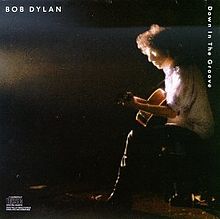

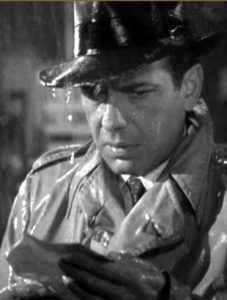
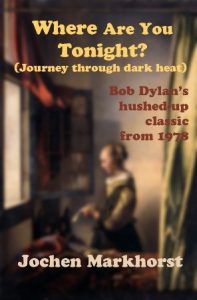 On April 5, we published here on Untold a first chapter of our attempt to elevate
On April 5, we published here on Untold a first chapter of our attempt to elevate 